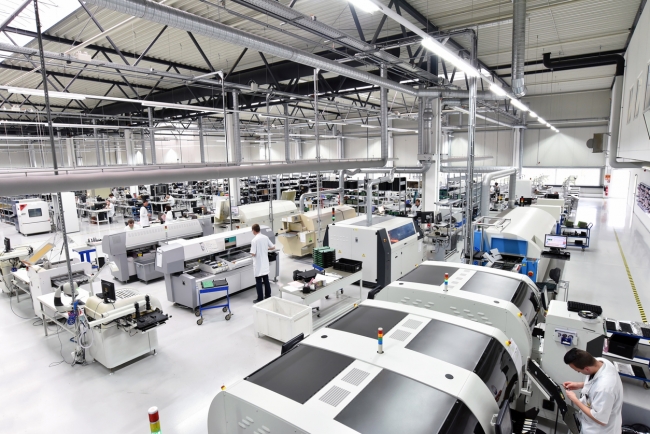4 minute read • published in partnership with Cimlogic
Insight: Gain real-time visibility of energy usage to improve efficiency, reduce costs and meet regulatory compliance
The UK has a statutory commitment to be Net Zero by 2050, in line with the Paris Agreement of 2015. Cimlogic looks at ways manufacturers can gain real-time visibility of energy usage to improve efficiency, reduce costs and meet regulatory compliance.
The government’s Net Zero Strategy sets out numerous regulatory requirements and policies that will be gradually amended over the coming years to mandate compliance amongst an increasing number of organisations. So, more businesses will have an obligation to report on and manage their carbon footprint, while moving towards Net Zero.
Here are some of the energy regulations that may affect your organisation:
• Energy Savings Opportunity Scheme (ESOS)
• PAS 51215-1 Energy and Net Zero Assessment Process Specification
• Streamlined Energy and Carbon Reporting (SECR)
• Climate Change Agreements (CCAs)
• UK Emissions Trading Scheme (UK ETS)

Manufacturers can gain real-time visibility of energy usage to improve efficiency, reduce costs and meet regulatory compliance / Picture: Getty/iStock
What is the Energy Savings Opportunity Scheme (ESOS)?
ESOS (now in Phase 3) is a mandatory energy assessment scheme in the UK. Organisations are required under ESOS to review total energy usage and energy efficiency and identify cost-effective energy savings opportunities by undertaking an energy audit.
Many organisations across the UK will be required to achieve compliance if they meet a certain entry criterion: 250+ employees, turnover of £44m+ and a balance sheet of £38m+ on 31 December 2022. The government predicts this will impact over 7,000 UK organisations.
Qualifying organisations must assess and report energy usage every 4 years, including the identification of opportunities to improve energy efficiency. Targets and plans must be set, with progress reported in future phases. If an organisation qualifies for ESOS and is fully covered by ISO 50001, they do not need to carry out an ESOS assessment but must notify the environment agency of compliance.
Recent changes to the ESOS Scheme
In phase 4 of the scheme (2023-2027), there will be a Net Zero element introduced to ESOS audits, which mandates that the energy-saving opportunity recommendations detailed in phase 3 must be acted upon.
• Are you prepared for these future changes?
• What additional measures, tools and capabilities will need exploring?
• How will you demonstrate that energy-saving opportunities have been explored and actions put in place
Manufacturers should consider implementing efficiency measures such as investing in improving data accuracy of energy consumption to highlight where older energy-inefficient assets could be upgraded or replaced to further reduce energy consumption without impacting productivity.

More businesses will have an obligation to report on and manage their carbon footprint, while moving towards Net Zero / Picture: Getty/iStock
The value of data
Recent research suggests that manufacturing sustainability is being negatively impacted due to inadequate data capabilities. A lack of strategy from senior management, coupled with data silo problems and cultural issues means that many manufacturers are struggling to utilise the data needed to become more energy-efficient and sustainable. The manufacturing sector is responsible for 20% of the world’s carbon emissions, so now is the time to get the most out of your data and understand its true value!
As well as adhering to the changing regulatory landscape, organisations are seeing increased supply chain pressures on energy and carbon reporting and reduction, while not forgetting the perusal of their own Net Zero commitments. Industry use cases are proving that data is indeed a critical tool in helping manufacturers achieve these ambitions.
Manufacturers must understand and utilise advanced analytics and monitoring tools to improve energy efficiency, reduce waste, and increase productivity while gaining actionable insights to tackle sustainability head-on.
The top 7 benefits of implementing digital technology to support your sustainability goals
• Gain real-time visibility of energy usage to highlight ways to manage and reduce energy consumption for reduced costs.
• Promote employee/stakeholder engagement to drive a culture of sustainability throughout the entire organisation.
• Measure the baseline of carbon emissions to act as an indicator of energy efficiency and performance, which can be tracked over time.
• Determine organisational footprint to access opportunities to reduce carbon emissions across multiple business units.
• Highlight energy-inefficient assets by contextualising energy usage data with production data. When energy data is transparent, accurate, and easy to access, it can highlight significant energy uses (SEUs) for energy reduction opportunities.
• Adhere to regulatory compliance to avoid non-compliance fines and damage to brand reputation, while strengthening your Corporate Social Responsibility (CSR) status.
• Meet commercial & procurement requirements. Organisations are under pressure from their clients and suppliers to provide energy and carbon reporting to evidence their Net Zero efforts.
Ask yourself some important questions
• Do you have access to accurate energy usage and efficiency data required to be ESOS compliant?
• Do you know by asset, line, or product, your largest energy-consuming machines, processes, and equipment?
• How easy is it to demonstrate compliance?
To ensure regulatory compliance it is critical to adhere to the deadlines and requirements set out by the ESOS scheme. Having access to the right energy data at the right time is critical to gaining the actionable insight needed to adhere to current and future legislation.
Learn how Cimlogic’s energy solution can help your organisation achieve regulatory compliance while supporting sustainability and carbon reduction goals: Cimlogic Energy Solution.
